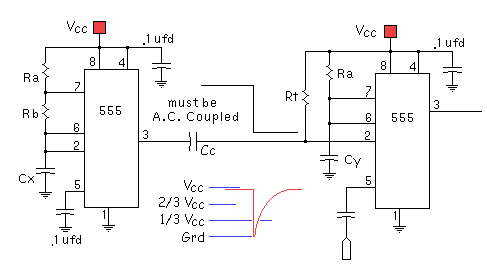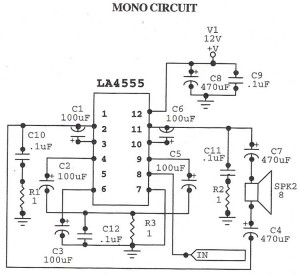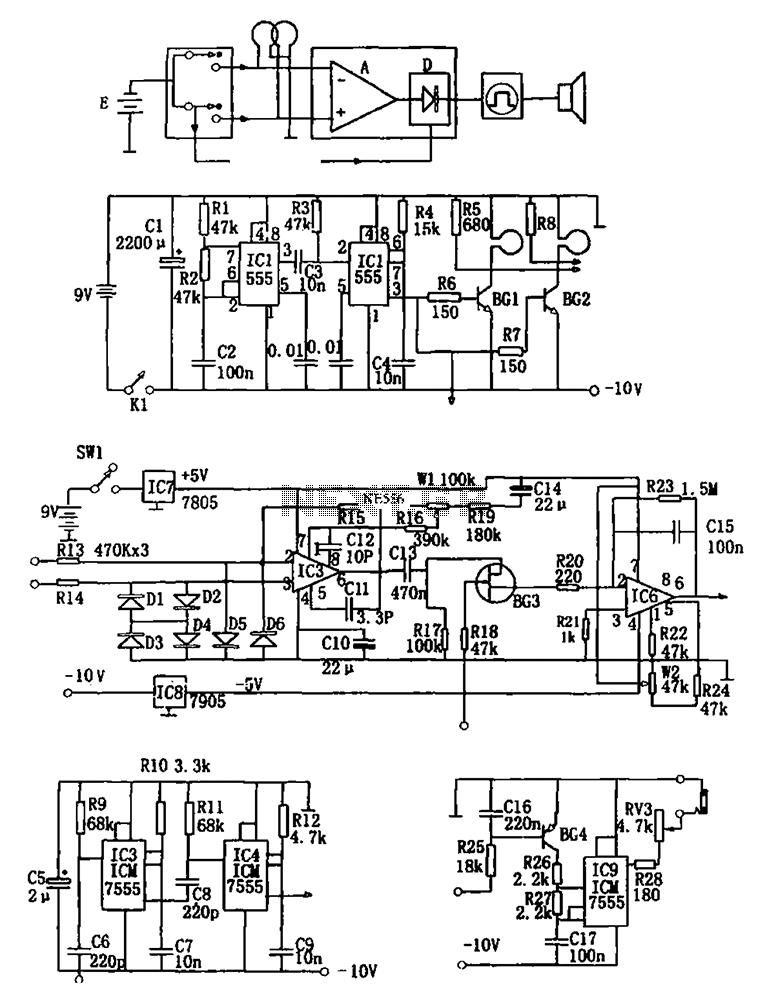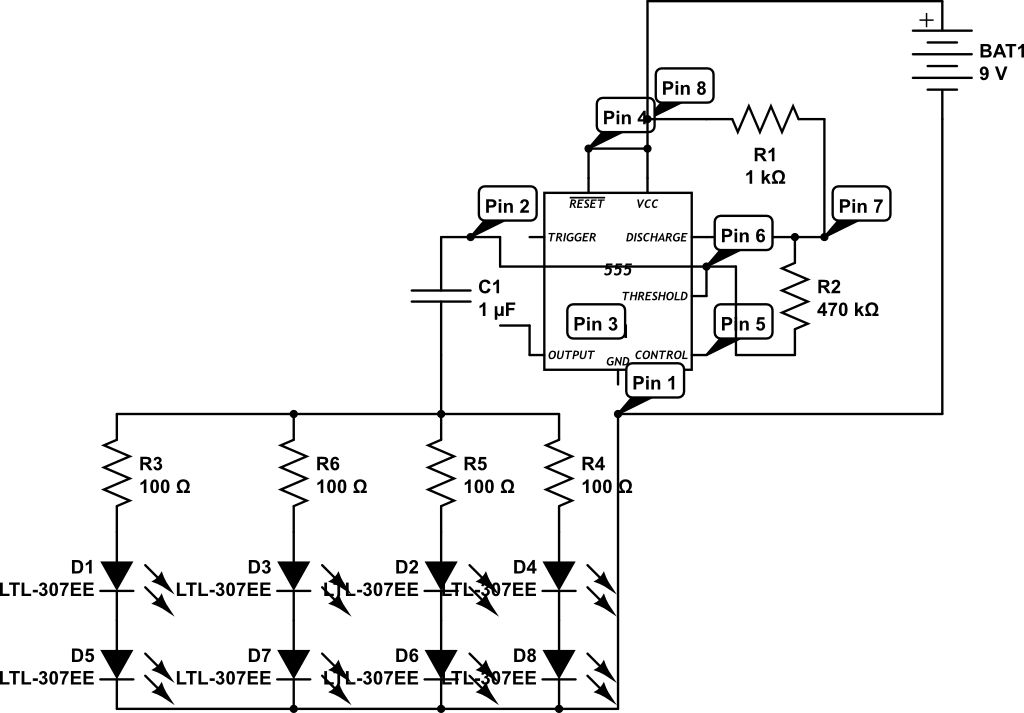
555 Applications and Examples

A collection of drawings showcasing various applications of the 555 timer IC. These include schematic diagrams sourced from online resources and literature, intended for personal reference. The original web pages from which these schematics were derived have not been preserved, resulting in potential lack of proper attribution.
The 555 timer IC is a versatile and widely used component in electronic circuits, known for its ability to function in various modes such as astable, monostable, and bistable configurations. In astable mode, the 555 can generate a continuous square wave output, making it suitable for applications such as clock pulses, LED flashers, and tone generation. The frequency and duty cycle of the output can be adjusted by changing the resistor and capacitor values in the circuit.
In monostable mode, the 555 timer acts as a one-shot pulse generator. When triggered, it produces a single output pulse of a specified duration, which can be used in applications like timers, pulse width modulation, and delay circuits. The length of the output pulse is determined by the resistor and capacitor connected to the timing pins of the 555.
Bistable mode allows the 555 to act as a flip-flop, providing a stable output that can be toggled between two states. This configuration is often used in memory storage applications, switch debouncing, and simple control systems.
The schematics included in this collection likely illustrate these various modes of operation, showcasing how the 555 timer can be integrated into different circuits. Each schematic can serve as a valuable reference for understanding the practical applications of the 555 timer, facilitating the design and implementation of electronic projects. Proper analysis of the circuit components, their values, and connections will provide insights into the functioning and versatility of the 555 timer in real-world applications.A collection of drawings of different 555 applications. Some are drawings of schematics found on the web and in books, and saved for my own reference. I did not save the web pages that these originated from, so some may not have proper attribution. If you will point it out, I will be more than happy to oblige. My thanks to you all. 🔗 External reference
The 555 timer IC is a versatile and widely used component in electronic circuits, known for its ability to function in various modes such as astable, monostable, and bistable configurations. In astable mode, the 555 can generate a continuous square wave output, making it suitable for applications such as clock pulses, LED flashers, and tone generation. The frequency and duty cycle of the output can be adjusted by changing the resistor and capacitor values in the circuit.
In monostable mode, the 555 timer acts as a one-shot pulse generator. When triggered, it produces a single output pulse of a specified duration, which can be used in applications like timers, pulse width modulation, and delay circuits. The length of the output pulse is determined by the resistor and capacitor connected to the timing pins of the 555.
Bistable mode allows the 555 to act as a flip-flop, providing a stable output that can be toggled between two states. This configuration is often used in memory storage applications, switch debouncing, and simple control systems.
The schematics included in this collection likely illustrate these various modes of operation, showcasing how the 555 timer can be integrated into different circuits. Each schematic can serve as a valuable reference for understanding the practical applications of the 555 timer, facilitating the design and implementation of electronic projects. Proper analysis of the circuit components, their values, and connections will provide insights into the functioning and versatility of the 555 timer in real-world applications.A collection of drawings of different 555 applications. Some are drawings of schematics found on the web and in books, and saved for my own reference. I did not save the web pages that these originated from, so some may not have proper attribution. If you will point it out, I will be more than happy to oblige. My thanks to you all. 🔗 External reference





